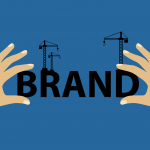10 expert tips for driving more marketing qualified leads

Acquiring leads is relatively simple for most businesses. However, getting marketing qualified leads — ones more likely to convert — is a far more difficult task that requires a great deal of research and complex funnel development.
What is a marketing qualified lead?
A marketing qualified lead (MQL) is a prospect who is more likely to become a customer because he or she has already been primed through various methods. Warming up this person to your brand, developing trust and positioning him or her to accept your solution is often accomplished through the content you offer.
Here are a few ways to generate more MQLs for your team:
1. Create magnetic content.
Researching your target-audience members from every angle can reveal their major pain points. With that knowledge, you can work with a content agency to craft compelling content that captures their attention.
When your audience members are the ones researching a problem, your content should be there, ready to pull them into the funnel. If you focus your efforts on creating high-value, comprehensive content, prospects will continue to engage and be more likely to progress further into your funnel.
2. Share compelling content.
You can’t just wait for customers to find their way into your funnel. Take a proactive approach to rounding up more leads by sharing your top-of-the-funnel content in channels and groups where your customers spend their time.
I do this on a regular basis, with the aim of providing as much value to my prospects as possible. I also try to maintain a consistent level of activity in the group so members don’t feel that I’m only showing up to spam them. Once you establish a foundation of trust, your 10-times content will propel more leads into your funnel.
3. Incentivize prospects at the top of the funnel.
Add a highly valuable offer at the top of the funnel to pique your audience members’ interest. This incentive should hone in on one of their major pain points. The opt-in for this offer should be available throughout your site, and it should be used as the primary call to action in your blog posts and social outreach.
4. Nurture and follow up.
As more leads opt in, continue to engage them beyond the offer you initially provided. Without engagement from your end, they’ll lose interest and forget about you.
Create a series of educational autoresponders that are designed to guide your leads to the consideration stage, or the middle of your funnel. As long as you’re providing valuable content, your prospects will be happy to continue engaging with you.
5. Leverage your successful customers.
Start connecting with your most successful customers. Personally interview them and find out what kind of success they’ve achieved with the help of your product or service. Develop case studies based on their results and share these studies with leads in the evaluation and comparison stages.
Reading about the success of your other customers, especially those who were facing similar obstacles, will likely push those prospects into positions where they’re ready to convert.
6. Refine your funnel.
Go back and examine each stage of your funnel, as well as the buyer’s journey. Analyze your data to determine which content and events would be most likely to convert your leads into customers. Review their activities throughout the funnel, look for items that correlate with the highest close rates and adjust your conversion path to steer prospects along that same journey to success.
7. Refine your calls-to-action.
The prospects in your funnel want to resolve a problem, and it’s up to you to communicate how you can help them find a suitable solution for their situation. The only way to encourage them to proceed is through your calls-to-action (CTA).
“A strong CTA compels people to click on it,” writes Neil Patel, founder of Crazy Egg. “It leaves a memory in the user’s mind even when they’ve exited the landing page.”
Make sure you’re running A/B tests on CTA variations and constantly refining them so they focus on the value by clearly explaining what benefits await the lead.
8. Intercept leads.
If you don’t want to leave your leads to navigate the path to conversion on their own, you can always intercept them from the beginning and guide them along in the process. Using a service like LeadChat or relying on your own chat integration can qualify leads far in advance and eliminate some of the barriers they may experience once they arrive on your site.
9. Utilize more video.
Improve engagement throughout the funnel by using more visual content, like videos. You can convey a lot more information in a 30-to 60-second video than you can by having someone read long copy. Videos on landing pages have been shown to increase conversion by up to 80 percent, and 64 percent of users who view video content are more likely to convert.
10. Revamp your forms.
Although reducing the number of required form fields can increase conversion rates, that doesn’t always help with qualification. In some cases, you can increase the number of fields without a drop in conversions as long as the information you’re requesting has value to the reader. Kindercare, a nationwide daycare provider, added fields that allowed parents to provide more information, and its conversions remained stable.
“Don’t make the form too long,” writes Jake Baadsgaard, founder of Disruptive Advertising. “Design it so it can be filled out in 15 seconds or less.”
___
by SUJAN PATEL
source: Entrepreneur

